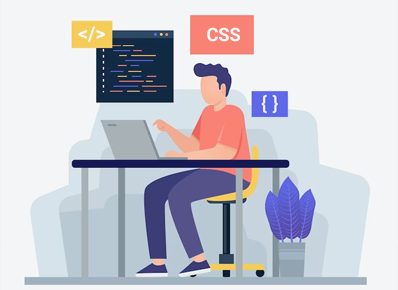Introduction
In the world of web automation, locators play a crucial role in identifying and interacting with elements on a webpage. Traditionally, different types of locators such as XPath, ID, class name, and tag name have been used to target specific elements. However, CSS selectors provide a powerful alternative that can simplify and enhance your web automation scripts.
In this blog post, we will explore how CSS selectors can replace all other locators, making your automation code more robust and maintainable.
What are CSS Selectors?
CSS (Cascading Style Sheets) selectors are powerful tools used in web development to select and style specific elements on a webpage. They allow us to target elements based on various criteria such as element type, class, ID, attributes, and hierarchy.
Advantages of Using CSS Selectors:
By leveraging CSS selectors in our automation scripts, we can enjoy several benefits:
a. Simplicity: CSS selectors provide a concise syntax for targeting elements, resulting in a cleaner and more readable code.
b. Flexibility: CSS selectors offer a wide range of targeting options, allowing you to select elements based on various criteria such as class, ID, attributes, and hierarchy.
c. Maintainability: Using CSS selectors reduces the reliance on multiple locators, making your code more maintainable and resistant to changes in the webpage structure.
d. Performance: CSS selectors are generally faster than XPath, which can be beneficial when working with complex web pages or executing a large number of automation tests.
CSS Selector Examples:
Let’s explore some common examples of CSS selectors and how they can replace traditional locators:
a. Selecting by ID:
From Id: id=’name’
Traditional Locator (XPath): //*[@id=’myElement’] or //tagname[@id=’myElement’]
CSS Selector: #myElement
b. Selecting by class name:
From class name: class=’myClass’
Traditional Locator (XPath): //*[@class=’myClass’] or //tagname[@class=’myClass’]
CSS Selector: .myClass
c. Selecting by tag name:
From tag name: tagname=’myClass’
Traditional Locator (XPath): //div
CSS Selector: div
d. Selecting by attribute:
Traditional Locator (XPath): //tagname[@attribute-Name=’attribute-value’]
CSS Selector: tagname[attribute-Name=’attribute-value’]
e. Selecting by hierarchy:
Traditional Locator (XPath): //div[@class=’parent’]/a[@class=’child’]
CSS Selector: div.parent > a.child
Advanced CSS Selectors:
CSS selectors offer a wide range of advanced features that can handle more complex scenarios, such as:
a. Selecting based on element attributes:
CSS Selector: input[type=’text’]
b. Selecting based on partial attribute values:
CSS Selector: [class^=’prefix’] (matches elements with a class attribute starting with “prefix”)
c. Selecting based on element states:
CSS Selector: input:disabled
d. Selecting based on element position:
CSS Selector: div:nth-child(2) (selects the second child div element)
Differences between CSS selector and Xpath
| CSS selector | Xpath |
| Easier to understand and use. | Complicated compared to CSS selector. |
| Faster than Xpath | Bit slower than CSS selector. |
| CSS Selector only allows unidirectional flow.(we can only traverse from parent to child but not from child to parent). | Xpath has bi-directional flow.(we can traverse from both parent to child and from child to parent). |
| General Syntax:tagname[attribute-Name=’attribute-value’] | General Syntax://tagname[@attribute-Name=’attribute-value’] |
Testing CSS Selectors
You can test your CSS selectors directly in the browser’s developer console, or using tools like the Chrome DevTools. This allows you to experiment and fine-tune your selectors before incorporating them into your automation code.
Conclusion
CSS selectors offer a powerful and flexible approach to targeting elements in web automation. By embracing CSS selectors, you can simplify your code, enhance maintainability, and improve the overall efficiency of your web automation scripts. Understanding and effectively utilizing CSS selectors will undoubtedly elevate your automation skills to the next level.

